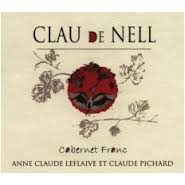To the OP - the wines are going to be different if you haven’t had them. It’s not even about acidity and there’s no reason you can’t like them - I like plenty of Loire reds and I also like Australian Shiraz and Grenache from many regions. You don’t have to line up on one side or another of some imaginary divide - obviously Jay hasn’t and there’s no reason to.
The things that make Loire wines different from say, a warm-weather Sonoma wine is that the Loire reds can often have a kind of green note. That green note, which you can also get in some wines from cool places like Monterey or on the east coast, Long Island, is probably more obnoxious to people who don’t like it than the acidity, which can actually be similar to many wines from CA and elsewhere. The other thing about the Loire reds is that if you’re coming from bigger, heavier reds, the “infrastructure” of the wine tends not to be dressed out by a lot of fruit flavors and weight if that makes any sense.
Usually when you taste wine, you pick up things like the balance between sweet and sour. That comes from various sources, most obviously the amount of sugar in the wine vs the pH of it. But it’s actually more complicated - we find different acids to be more or less harsh and we sometimes perceive sweetness from glycerol, which also contributes to a smooth mouthfeel. A lot of what we perceive is what our brain thinks it’s going to get - it fills in the pattern it’s expecting. Food scientists make use of that when designing new snack foods, and people like Reidel have made fortunes out of it from wine drinkers.
But it’s not like there’s high-acid and low-acid wine and that’s the end of it, although many people simply decide to believe that. The red wines from the Loire, as well as those from other cool regions in Austria, Hungary, north Italy, Switzerland, etc, may not necessarily be more acidic than wines from elsewhere in terms of pH, but they will feel completely different because they tend not to have the same heft, and we will taste them as different as well.
Now given the Loire, there are several regions and they’re slightly different, although if you’re not famliar with the area, it’s likely you won’t pick up a lot of distinction. But to give it a shot - Saumur is huge, so it’s difficult to make any real generalization, but if I were you I’d start there. It has the largest number of producers, in some places is warm enough to produce Merlot and Cab Sauvignon as well as Cab Franc, and it’s the home of what I think is one of the best co-ops in the world, the Cave des Vignerons de Saumur, which was re-named last year to “Robert et Marcel”!!! (The original founders of the co-op back in the '50s) Anyhow, to me they are on par with the Produttori de Barbaresco in that they produce wines of outstanding quality, almost a definition of the area, and the wines are a fraction of the cost that you’d expect for the quality they deliver. You can pick up their wines for under $10 a bottle and they even age a bit. Keep a few for five, six, seven years and see what happens to them.
Also, what might be the best wine produced in the Loire comes from Saumur, or rather a sub-region of it called Saumur-Champigny, which is considered one of, if not the best region. That’s where Clos Rougeard is from. It’s not cheap, but it’s one of the world’s great Cab Francs.
Moving farther west, you come to Touraine and they might have the most diverse set of grapes - I’m not actually sure of that but in addition to Cab Franc, they grow Gamay, Cot, Pineau d’Aunis, and Pinot Noir and you find them in blends or monovarietal versions. That’s also where Chinon is - it’s a part of the larger political region of Touraine.
Because of the diversity, it’s hard to generalize, but the wines from Touraine, and from Chinon, tend to be a little lighter than those from Saumur.
Bourgueil is also part of Touraine and for me, it’s one of the toughest places - their wines tend to be more tannic, astringent and bitter and that’s the last place I’d look if I were you. Doesn’t mean the wines are bad, just that I don’t think it would be the best intro. Supposedly if you move up the hills from the river, you find great differences, but that’s a distinction that’s so far lost on me.
To be honest however, I’m not completely sure I could distinguish Chinon from Bourgueil blind - I’ve had fewer wines from Bourgueil than from Chinon so that perception may just be based on limited data. I’ve never tried the blind distinction either, so that will have to wait for another time.
As for Jay’s unfortunate bottle - it’s not a great wine in the first place IMHO, so I’d open it at a party when people won’t be paying a lot of attention.
Three things to keep in mind.
-
The Loire makes really good sparkling wine that, like some cava in Spain, is a real bargain if you like sparkling wine.
-
The Loire produces really good white wines and can actually make good Sauvignon Blanc, for which they deserve credit since I usually can’t abide that grape. But they make wonderful wine from Chenin Blanc and in the far west, Melon de Bourgogne.
-
The Loire produces outstanding sweet wines from botrytized grapes. In fact, after Tokaj and Neusiedlersee, it may be the best source of them.

